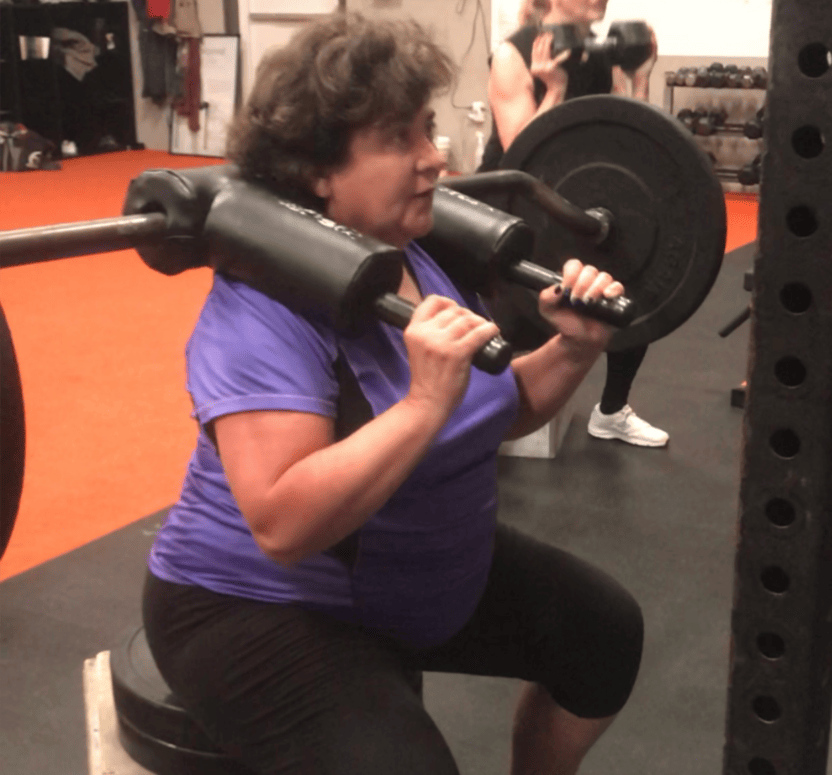During my time as a coach, I have encountered many people who have experienced a lot of knee pain while squatting. When I ask them to show me their squats, I discover multiple issues with their technique. Particularly, (but not exclusively) squatting with toes pointed forward descending straight down into the squat and knees tracking significantly over their toes as heels come off the floor. This set-up puts a lot of weight and force directly onto the knees.
Let’s fix it by starting with proper squat set up:
• Shoulder width-stance with knees and hips fully extended
• Grip floor while placing weight in the heels – create external tension on the floor.
• Brace core
• Chest up to position the spine in neutral.
• Unlock the knees
• Move hips back and down (versus moving the knees forward.)
• Descend until the hip crease is below the kneecap
• Keep the knees over the feet and the spine in a neutral position.
Pushing the hips back, verses allowing the knee forward approach allows the load to be shared with the hips, as well as the hamstrings and glutes. Working to keep the load in the posterior chain will reduce loading anteriorly – which can create (or exacerbate) knee issues.
If you’ve created a good set up position and checked all the boxes above, yet still have knee pain, I always have my athletes then check the soft tissue in the quads, specifically above the knees. Foam rolling is helpful but it often can’t quite reach deep enough. I recommend deeper tissue work with “barbell smashing”. Learn more about that here.
The next recommendation I have would be squatting to a box. The box squat can act as a teaching tool if you’re having difficulty effectively instituting a hip-hinge. Box Squatting is also easier on the knees because the perpendicular tibia position reduces pressure on the patellar tendons. With a box as a reference point, you have a tactile cue to ensure proper depth on each rep. I recommend a higher box vs. a lower box, as maintaining a neutral spine is easier for most.
Hope this helps!
Angie Foree

